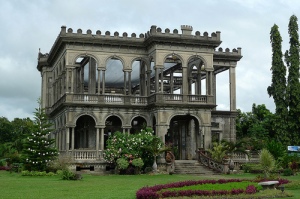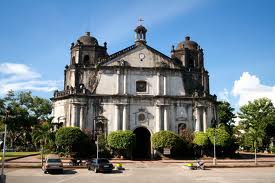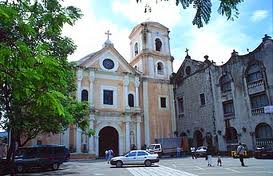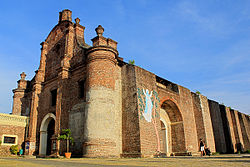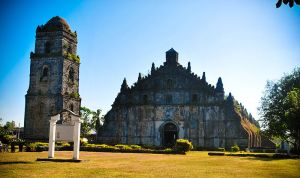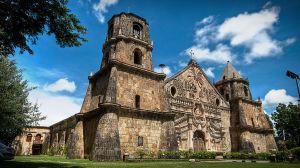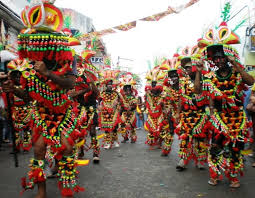I. Regions
The islands of the Philippines are divided into three groups:
1.) Luzon is a group of islands in the north of Philippines. It includes the island of Luzon, the Batanes and Babuyan groups and the main and outlying islands of Catanduanes, Marinduque, Masbate, Romblon, Mindoro, and Palawan in the south. The nation’s capital, Manila, is located on the island of Luzon.
2.) The Visayas includes the major islands of Panay, Negros, Boracay, Cebu, Bohol, Leyte andSamar. The main city is Cebu.
3.) Mindanao is an island group in the south, taking in the large island of Mindanao itself and several smaller outlying islands.
II. Major Cities
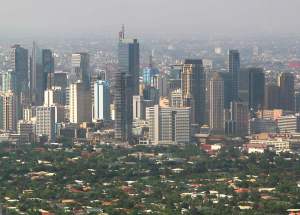 1.) Manila is the nation’s capital city and center to a massive metropolis of over 12 million residents.
1.) Manila is the nation’s capital city and center to a massive metropolis of over 12 million residents.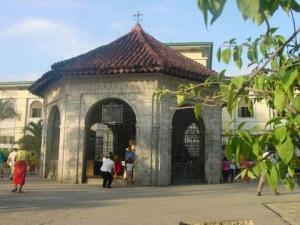 2.) Cebu is dubbed as the Queen City of the South and is the oldest city in the country which dates back to the 16th century.
2.) Cebu is dubbed as the Queen City of the South and is the oldest city in the country which dates back to the 16th century.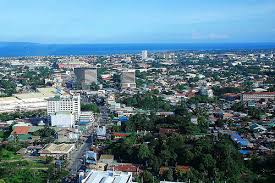 3.) Davao is the largest city in the country in terms of land size and is the center of commerce in the island of Mindanao.
3.) Davao is the largest city in the country in terms of land size and is the center of commerce in the island of Mindanao.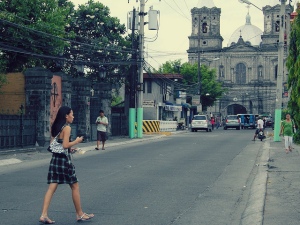 4.) Angeles is a city in Pampanga that played host to a US military air base, Clark Airfield, until their departure in the early ’90s. Supplanting it is a network of highways linking Subic, Manila and Tarlac provinvce to the new Diosdado Macapagal International Airport inside Clark. A robust local economy is supported by relocators of big multinational companies housed within a new export processing zone.
4.) Angeles is a city in Pampanga that played host to a US military air base, Clark Airfield, until their departure in the early ’90s. Supplanting it is a network of highways linking Subic, Manila and Tarlac provinvce to the new Diosdado Macapagal International Airport inside Clark. A robust local economy is supported by relocators of big multinational companies housed within a new export processing zone.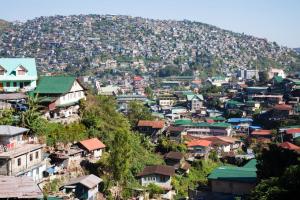 6.) Baguio is the summer capital of the Philippines, dubbed as the city of Pines. This city is located on the mountaintops of the Cordillera mountains.
6.) Baguio is the summer capital of the Philippines, dubbed as the city of Pines. This city is located on the mountaintops of the Cordillera mountains.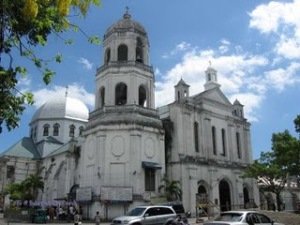 7.) Batangas is an important port city south of Manila and is the center of commerce of the Batangas province that is known for its beautiful dive sites.
7.) Batangas is an important port city south of Manila and is the center of commerce of the Batangas province that is known for its beautiful dive sites.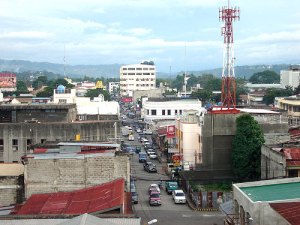 8.) Cagayan De Oro is a young city where you can sit back and relax while embracing the gift of nature. Even if Cagayan de Oro is largely based on industry, trade, like the local and multi-national companies such as Del Monte Philippines, Nestle, Coca-Cola, Pepsi Cola, service and tourism still makes the city a perfect place to visit.
8.) Cagayan De Oro is a young city where you can sit back and relax while embracing the gift of nature. Even if Cagayan de Oro is largely based on industry, trade, like the local and multi-national companies such as Del Monte Philippines, Nestle, Coca-Cola, Pepsi Cola, service and tourism still makes the city a perfect place to visit.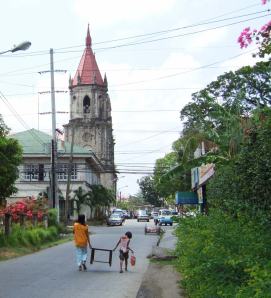 9.) Iloilo, officially the City of Iloilo, is a highly urbanized city on Panay Island in the Philippines, and the capital city of the province of Iloilo.
9.) Iloilo, officially the City of Iloilo, is a highly urbanized city on Panay Island in the Philippines, and the capital city of the province of Iloilo.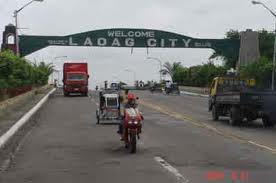 10.) Laoag is a major city in the northwest coast of Luzon and the capital of the Ilocos Norte province which is home to some historic architectures that dates back the Spanish period.
10.) Laoag is a major city in the northwest coast of Luzon and the capital of the Ilocos Norte province which is home to some historic architectures that dates back the Spanish period.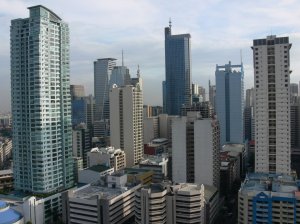 11.) Makati is the main financial capital of the country where major banks, international companies and embassies are located.
11.) Makati is the main financial capital of the country where major banks, international companies and embassies are located.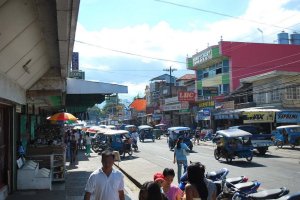 13.) Puerto Princesa is the capital city of the island province of Palawan which is dubbed as the Philippines’ Last Frontier for maintaining its flora and fauna from being spoiled by development.
13.) Puerto Princesa is the capital city of the island province of Palawan which is dubbed as the Philippines’ Last Frontier for maintaining its flora and fauna from being spoiled by development.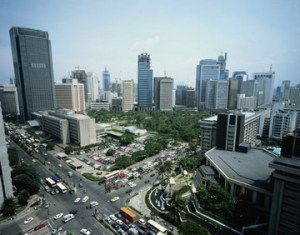 14.) Quezon City is the country’s most populated city. It is located within Metro Manila and has once been the capital of the Philippines during its commonwealth era.
14.) Quezon City is the country’s most populated city. It is located within Metro Manila and has once been the capital of the Philippines during its commonwealth era.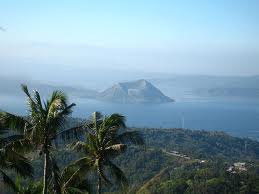 15.) Tagaytay City is a popular tourist destination offering a spectacular view of the famous Taal Volcano.
15.) Tagaytay City is a popular tourist destination offering a spectacular view of the famous Taal Volcano.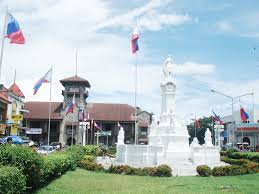 16.) Zamboanga is the center of the Zamboanga peninsula that is home to the colorful boats called Vinta.
16.) Zamboanga is the center of the Zamboanga peninsula that is home to the colorful boats called Vinta.
III. Metro Areas
Metro Manila is the metropolitan region around the city of Manila which is also known as the National Capital Region.
Metro Cebu is the metropolitan region surrounding the city of Cebu in the Visayas.
Metro Bacolod is the metropolitan area comprising the city of Bacolod, Talisay and Silay inNegros Occidental.
Sights and Activities
Sights and Activities
IV. Historical Sites
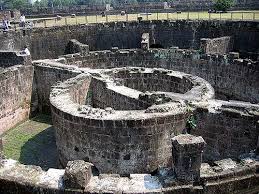 Intramuros is the Walled City of Manila. It was built by the Spaniards in the 16th century and became the center of Spanish rule for over three centuries.
Intramuros is the Walled City of Manila. It was built by the Spaniards in the 16th century and became the center of Spanish rule for over three centuries.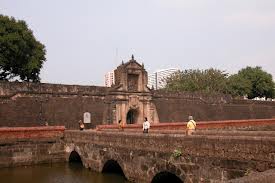 Fort Santiago is part of the walls of Intramuros. Located on the northwestern part of the perimeter walls, this battle fortress guarded the mouth of Pasig River and the outlying Manila Bay.
Fort Santiago is part of the walls of Intramuros. Located on the northwestern part of the perimeter walls, this battle fortress guarded the mouth of Pasig River and the outlying Manila Bay.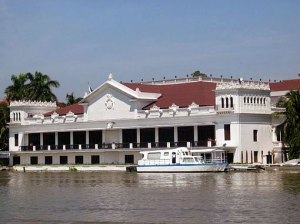 Malacañang Palace – The official residence of the President of the Republic of the Philippines. Malacañang comes from the Tagalog term “may lakan diyan” or “a chief (or nobleman) lives there”. It is situated in the Manila district of San Miguel, along the north bank of the Pasig River. At the turn of the 18th century, the place was a fashionable area for setting up manor houses of the elite. Built by Don Luis Rocha in 1802 as his summer residence, he sold this property to Col. Jose Miguel Formento of the Spanish Army. Later, it was again sold to the Spanish government in 1825 when it was looking for a residence for the Governor-General whose official residence, the Palacio del Gobernador inside Intramuros, was razed by fire.
Malacañang Palace – The official residence of the President of the Republic of the Philippines. Malacañang comes from the Tagalog term “may lakan diyan” or “a chief (or nobleman) lives there”. It is situated in the Manila district of San Miguel, along the north bank of the Pasig River. At the turn of the 18th century, the place was a fashionable area for setting up manor houses of the elite. Built by Don Luis Rocha in 1802 as his summer residence, he sold this property to Col. Jose Miguel Formento of the Spanish Army. Later, it was again sold to the Spanish government in 1825 when it was looking for a residence for the Governor-General whose official residence, the Palacio del Gobernador inside Intramuros, was razed by fire.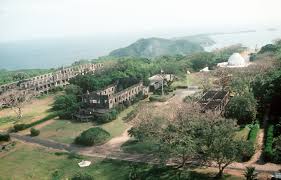 Corregidor – A tadpole shaped island near the mouth of Manila Bay. This served as the first line of defense from invading ships or galleons going into Manila Bay since the Spanish period. This has been a site of several battles during WWII.
Corregidor – A tadpole shaped island near the mouth of Manila Bay. This served as the first line of defense from invading ships or galleons going into Manila Bay since the Spanish period. This has been a site of several battles during WWII.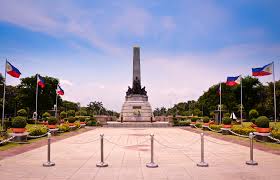 Rizal Park is a large park named after the country’s national hero, Dr. Jose Rizal. Rizal’s monument marks the actual site where he was executed.
Rizal Park is a large park named after the country’s national hero, Dr. Jose Rizal. Rizal’s monument marks the actual site where he was executed.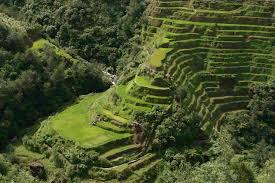 The Banaue Rice Terraces are 2,000-year-old terraces that were carved into the mountains of Ifugao in the Philippines by ancestors of the indigenous people. The Rice Terraces are commonly referred to by Filipinos as the “Eighth Wonder of the World”.
The Banaue Rice Terraces are 2,000-year-old terraces that were carved into the mountains of Ifugao in the Philippines by ancestors of the indigenous people. The Rice Terraces are commonly referred to by Filipinos as the “Eighth Wonder of the World”.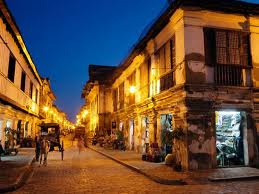 Vigan’s Calle Crisologo is considered to have the oldest and most preserved Spanish colonial town in the country. This street at the centre of the city is lined with 16th century ancestral houses and cobbled stones roads. Alltogether, the historic town of Vigan is a Unesco World Heritage Site.
Vigan’s Calle Crisologo is considered to have the oldest and most preserved Spanish colonial town in the country. This street at the centre of the city is lined with 16th century ancestral houses and cobbled stones roads. Alltogether, the historic town of Vigan is a Unesco World Heritage Site.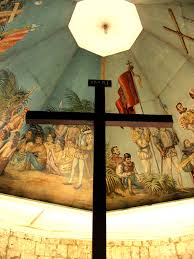 Magellan’s Cross belongs to the city of Cebu, this cross was erected by the explorers led by Ferdinand Magellan upon their arrival in the island of Cebu in the 16th Century.
Magellan’s Cross belongs to the city of Cebu, this cross was erected by the explorers led by Ferdinand Magellan upon their arrival in the island of Cebu in the 16th Century.
Baroque Churches from the Spanish era churches that are considered as a UNESCO World Heritage Site litter the country. These are:
V. Nature
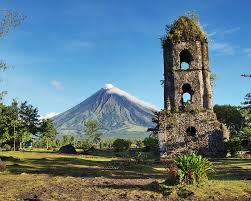 Mayon Volcano is the iconic volcano of the Bicol region near the southeast end of Luzon island. It is relatively active and despite numerous eruptions, Mayon volcano still exudes a majestic, perfect cone. In a recent explosion, its bowels rolled over several barangays(small towns). The most notorius eruption happened in 1814 where whole towns along the path of its flowing lava got buried. An attraction is the town of Cagsawa, where only the town’s church belfry remained exposed aboveground. Mayon volcano is nestled on the province of Albay.
Mayon Volcano is the iconic volcano of the Bicol region near the southeast end of Luzon island. It is relatively active and despite numerous eruptions, Mayon volcano still exudes a majestic, perfect cone. In a recent explosion, its bowels rolled over several barangays(small towns). The most notorius eruption happened in 1814 where whole towns along the path of its flowing lava got buried. An attraction is the town of Cagsawa, where only the town’s church belfry remained exposed aboveground. Mayon volcano is nestled on the province of Albay.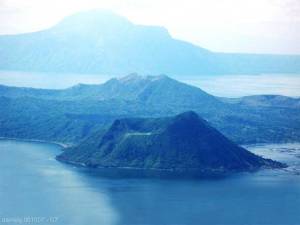 Taal Volcano is a low lying active volcano that has a unique land formation. It has a lake within the volcano, while the volcano is within a larger lake in the island of Luzon. Tagaytay city offers the most scenic view of this beautiful volcano.
Taal Volcano is a low lying active volcano that has a unique land formation. It has a lake within the volcano, while the volcano is within a larger lake in the island of Luzon. Tagaytay city offers the most scenic view of this beautiful volcano.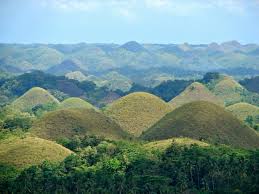 Chocolate Hills make up more than 1,200 perfectly-coned hills clustered in the town of Carmen on the central part of the island of Bohol. The hills turn brown during the dry season, mimicking the likes of Hershey Kisses Chocolates.
Chocolate Hills make up more than 1,200 perfectly-coned hills clustered in the town of Carmen on the central part of the island of Bohol. The hills turn brown during the dry season, mimicking the likes of Hershey Kisses Chocolates.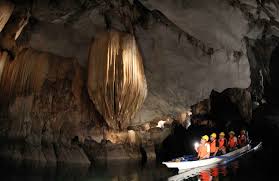 Puerto Princesa Subterranean River is the longest underground river situated at the western shores of the city of Puerto Princesa in the island of Palawan and is on the Unesco World Heritage List.
Puerto Princesa Subterranean River is the longest underground river situated at the western shores of the city of Puerto Princesa in the island of Palawan and is on the Unesco World Heritage List.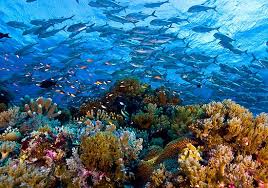 Tubbataha Reef is situated in south of Palawan in the Sulu Sea, this large marine sanctuary is one of the best dive sites in the country and also a Unesco World Heritage Site.
Tubbataha Reef is situated in south of Palawan in the Sulu Sea, this large marine sanctuary is one of the best dive sites in the country and also a Unesco World Heritage Site.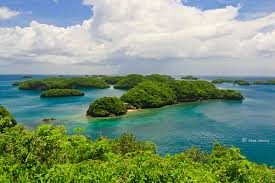 Hundred Islands National Park is a colony of 123 vegetated islands and islets found off the coast of Alaminos town in Pangasinan province.
Hundred Islands National Park is a colony of 123 vegetated islands and islets found off the coast of Alaminos town in Pangasinan province.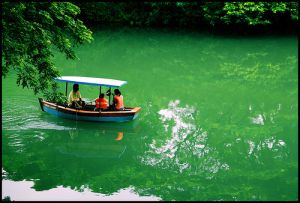 La Mesa Ecopark is a watershed northeast of the metropolis and serves as the primary source of drinking water to all of Metro-Manila’s 12 million residents. The reservoir occupies some 700 hectares, as 2,000 hectares of rainforest land protect and surround it. A vigorous campaign is now being drummed-up to protect the watershed from degradation. The ecopark is a popular picnic destination on weekends by the locals. Because of its romantic scenery, it is a frequent venue for photo shoots of would-be couples who will be tying the knot.
La Mesa Ecopark is a watershed northeast of the metropolis and serves as the primary source of drinking water to all of Metro-Manila’s 12 million residents. The reservoir occupies some 700 hectares, as 2,000 hectares of rainforest land protect and surround it. A vigorous campaign is now being drummed-up to protect the watershed from degradation. The ecopark is a popular picnic destination on weekends by the locals. Because of its romantic scenery, it is a frequent venue for photo shoots of would-be couples who will be tying the knot.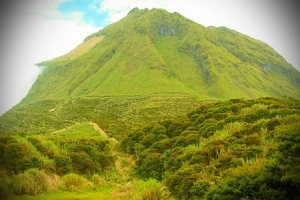 Mount Apo National Park Rising to 2,954 metres above sea level on the island ofMindanao, the peak of Mount Apo is the highest in the Philippines. It hosts the sanctuary of the near-extinct Philippine Eagle (or Monkey-eating Eagle). One meter in height and having a very large wing span area, it is the world’s largest eagle.
Mount Apo National Park Rising to 2,954 metres above sea level on the island ofMindanao, the peak of Mount Apo is the highest in the Philippines. It hosts the sanctuary of the near-extinct Philippine Eagle (or Monkey-eating Eagle). One meter in height and having a very large wing span area, it is the world’s largest eagle.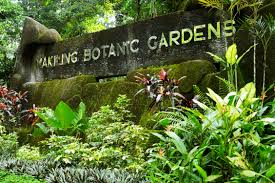 Makiling Botanical Garden is a forested reserve popular as a hiking destination. Found on Mount Makiling, an inactive volcano, in the town of Los Baños 50 kilometres south of Manila. Mount Makiling abounds with hot springs. It was the site of the 10th World Jamboree of Boy Scouts in 1959.
Makiling Botanical Garden is a forested reserve popular as a hiking destination. Found on Mount Makiling, an inactive volcano, in the town of Los Baños 50 kilometres south of Manila. Mount Makiling abounds with hot springs. It was the site of the 10th World Jamboree of Boy Scouts in 1959.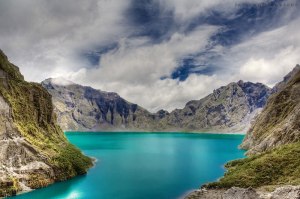 Mount Pinatubo, once a dormant volcano until its major eruption in 1991, which was considered to be the second strongest eruption in the century. Now its crater lake has become an attraction to tourists looking for adventure.
Mount Pinatubo, once a dormant volcano until its major eruption in 1991, which was considered to be the second strongest eruption in the century. Now its crater lake has become an attraction to tourists looking for adventure.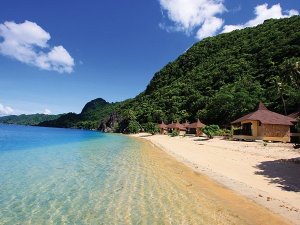 Caramoan is better known for its very rugged terrain and enchanting chain of white-sand islands. Located at the extreme southeastern tip of Camarines Peninsula.
Caramoan is better known for its very rugged terrain and enchanting chain of white-sand islands. Located at the extreme southeastern tip of Camarines Peninsula.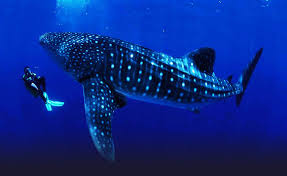 Donsol in the extreme southeast of Luzon is the Philippine capital of meeting the giant but friendly whaleshark (Butanding in local language). You can go swimming and snorkelling with them and although they have been seen in most months, the best season is from December to June with a peak from February to April.
Donsol in the extreme southeast of Luzon is the Philippine capital of meeting the giant but friendly whaleshark (Butanding in local language). You can go swimming and snorkelling with them and although they have been seen in most months, the best season is from December to June with a peak from February to April. The Rice Terraces of the Philippine Cordilleras are a Unesco World Heritage Site in the central north of the island of Luzon.
The Rice Terraces of the Philippine Cordilleras are a Unesco World Heritage Site in the central north of the island of Luzon.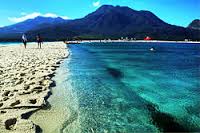 Camiguin is a tiny island in between Mindanao and Bohol and has some stunning scenery with volcanos and beaches. It is said to be the island with the highest density of volcanoes in the world!
Camiguin is a tiny island in between Mindanao and Bohol and has some stunning scenery with volcanos and beaches. It is said to be the island with the highest density of volcanoes in the world!
VI. Theme Parks
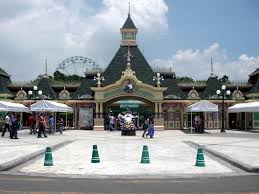 Enchanted Kingdom is the first year-round theme park in the country that features different rides and thrill activities. Located in Sta. Rosa, Laguna province, about 36 kilometres south of the capital Manila.
Enchanted Kingdom is the first year-round theme park in the country that features different rides and thrill activities. Located in Sta. Rosa, Laguna province, about 36 kilometres south of the capital Manila.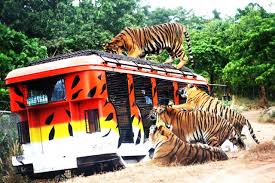 Zoobic Safari is a theme park inside the Subic Freeport that features encounters with Bengal tigers in secured enclosure. 120 kilometres northwest of Manila, Subic Freeport used to host the US Navy Pacific Fleet until 1991.
Zoobic Safari is a theme park inside the Subic Freeport that features encounters with Bengal tigers in secured enclosure. 120 kilometres northwest of Manila, Subic Freeport used to host the US Navy Pacific Fleet until 1991.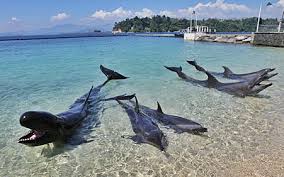 Ocean Adventure is a water theme park in Subic that features dolphin and whale performances in the open sea.
Ocean Adventure is a water theme park in Subic that features dolphin and whale performances in the open sea.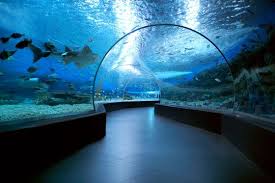 Manila Ocean Park – The first oceanarium in the country that features endemic marine creatures found in the archipelago. It is located at the back of Luneta Grandstand, Luneta Park.
Manila Ocean Park – The first oceanarium in the country that features endemic marine creatures found in the archipelago. It is located at the back of Luneta Grandstand, Luneta Park.
VII. Other Activities
Beaches are stunning in Boracay, Puerto Galera, Cebu, Puerto Princesa, El Nido,Pagudpud, Camiguin, Bohol, Marinduque.
Scuba Diving that is some of the best in the world can be found in Anilao, Bohol, Boracay, Busuanga, Coron, Cebu, Malapascua, Puerto Galera, Tubbataha.
Surfing can be experienced on the island of Siargao in Surigao Province (Mindanao) and the coastal towns of La Union province in Luzon, 250 kilometres north of Manila.
White Water Rafting can be thrilling near to Cagayan De Oro, Pagsanjan, Kalinga.
Wakeboarding in CamSur Watersports Complex
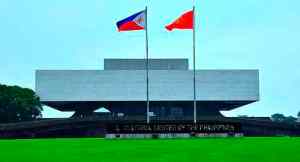 Cultural Center of the Philippines – opened its doors in 1999. Located along Roxas Boulevard at the south end of Manila, it is a grand edifice that plays host to both local and international cultural performances, exhibitions, shows and concerts. It houses the Philippine Philharmonic Orchestra, Ballet Philippines, Philippine Folk Dance Company, and the world-known Madrigal Singers.
Cultural Center of the Philippines – opened its doors in 1999. Located along Roxas Boulevard at the south end of Manila, it is a grand edifice that plays host to both local and international cultural performances, exhibitions, shows and concerts. It houses the Philippine Philharmonic Orchestra, Ballet Philippines, Philippine Folk Dance Company, and the world-known Madrigal Singers.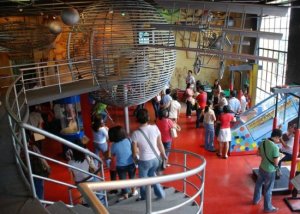 Museong Pambata – An interactive museum for children and the younger generation. Located on the southwest fringe of Rizal (Luneta) Park, beside the US Embassy.
Museong Pambata – An interactive museum for children and the younger generation. Located on the southwest fringe of Rizal (Luneta) Park, beside the US Embassy.
VIII. Events and Festivals
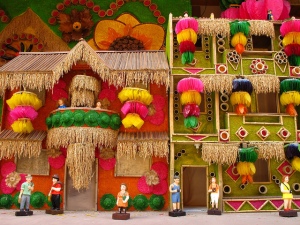 Pahiyas Festival is one of the country’s biggest, and most colorful harvest festival every May 15th, along with the harvest festivals of the towns of Tayabas, Sariaya, Gumaca and Tiaong. These are the Philippines best known harvest festivals to honor San Isidro Labrador, the patron saint of farmers. Known as the “Pahiyas”, the festival is deeply rooted in the traditional celebration of the townsfolk in thanksgiving for bounty harvest.
Pahiyas Festival is one of the country’s biggest, and most colorful harvest festival every May 15th, along with the harvest festivals of the towns of Tayabas, Sariaya, Gumaca and Tiaong. These are the Philippines best known harvest festivals to honor San Isidro Labrador, the patron saint of farmers. Known as the “Pahiyas”, the festival is deeply rooted in the traditional celebration of the townsfolk in thanksgiving for bounty harvest.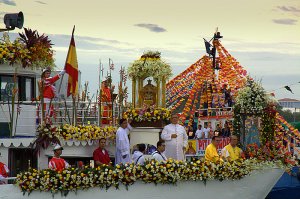 Sinulog Festival is held every third Sunday of January in Cebu City. Distinguished by signature shuffling dance performed along the streets of the city as they celebrate in honor of the image of the Holy Child, the Santo Niño.
Sinulog Festival is held every third Sunday of January in Cebu City. Distinguished by signature shuffling dance performed along the streets of the city as they celebrate in honor of the image of the Holy Child, the Santo Niño.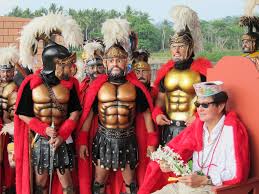 Moriones Festival is held during the Holy Week, which normally fall on the month of April. This is one of the most famous festival in the country held in Boac,Marinduque where locals dressed in Roman warriors reenact the life of Longuinus, the centurion who stabbed Jesus’ side.
Moriones Festival is held during the Holy Week, which normally fall on the month of April. This is one of the most famous festival in the country held in Boac,Marinduque where locals dressed in Roman warriors reenact the life of Longuinus, the centurion who stabbed Jesus’ side.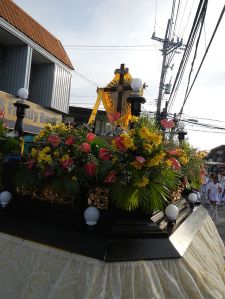 Flores De Mayo or the Santacruzan is held nationwide within the festive month of May. It’s a parade of a town’s beautiful ladies on procession to commemorate St. Helena’s search for Christ’s cross.
Flores De Mayo or the Santacruzan is held nationwide within the festive month of May. It’s a parade of a town’s beautiful ladies on procession to commemorate St. Helena’s search for Christ’s cross.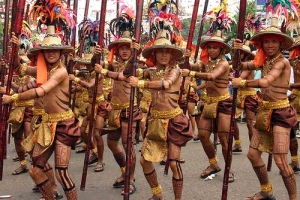 Pintados Festival is held every June 29th in the city of Tacloban, this wild fiesta centers on the imitating pre-Hispanic tattooed warriors. Reveller join in the celebration in painting their bodies.
Pintados Festival is held every June 29th in the city of Tacloban, this wild fiesta centers on the imitating pre-Hispanic tattooed warriors. Reveller join in the celebration in painting their bodies.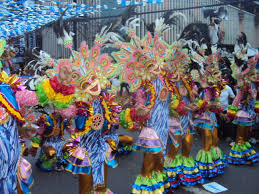 Maskara Festival is the biggest annual event in the city of Bacolod happening every third week of October. It is a carnival themed festival featuring masked participants in colorful costumes dancing in the streets.
Maskara Festival is the biggest annual event in the city of Bacolod happening every third week of October. It is a carnival themed festival featuring masked participants in colorful costumes dancing in the streets.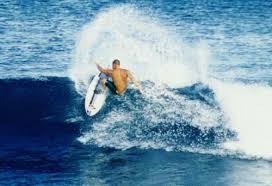 Siargao surfing festival – Started in 2010 and was added on to the international billabong pro that has been held on Siargao for over a decade, it also runs as the same time as the annual fiesta in General Luna. Two weeks of surfing, livebands, padgents, parades and amazing party’s. It usually starts mid September every year.
Siargao surfing festival – Started in 2010 and was added on to the international billabong pro that has been held on Siargao for over a decade, it also runs as the same time as the annual fiesta in General Luna. Two weeks of surfing, livebands, padgents, parades and amazing party’s. It usually starts mid September every year.